I look forward to Passover with a little angst. I’m not the world’s greatest housekeeper and switching my house around is a pain. If I’m lucky, I can convince my younger son who boomeranged after college to haul the Passover stuff up from the basement and lug the regular stuff down. I must admit, I have never gone through my house with a feather looking for chametz, the food forbidden during Passover. Passover is an opportunity for me to run the self-cleaning oven. (Self-cleaning ovens are a great invention!)
Seder Plate by Yafit
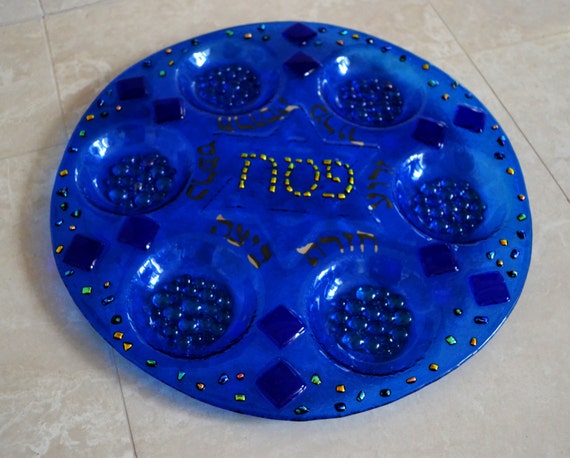
Then there is the cooking. Lots of eggs during Passover. It’s a good thing that eggs are no longer blamed for high cholesterol because they are pretty important in getting baked goods to “rise” without yeast – a major no-no during the holiday. My matzo balls are almost always floaters. To help insure this, 1) I separate the eggs and whisk the whites until they are good and stiff. Then I add them to the Manishewitz Matzo Ball Mix (tip #2), let the mixture rest, make the batter into balls, plop the balls into boiling water, and trick 3, cover and don’t peek for the time specified on the package.
Matzoh Art by Eisner Art
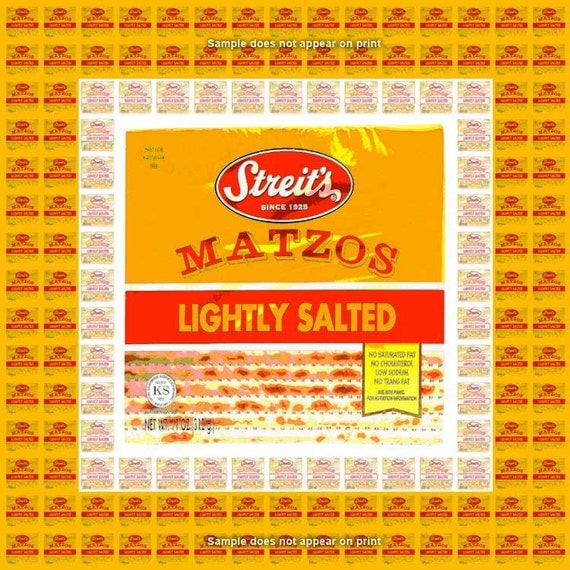
Passover Parsley and Salt Water Bowls by Jewish Heirlooms
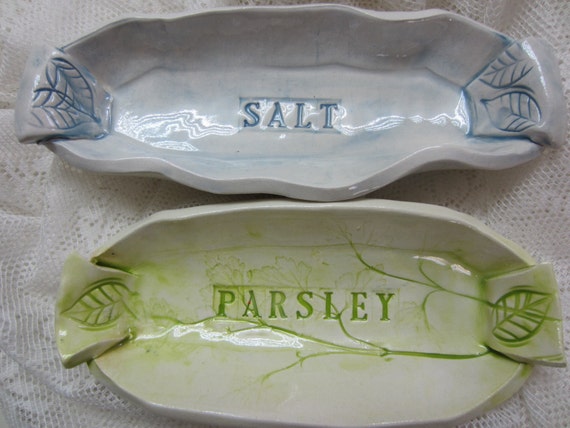
You know it is Passover in my house because the seder plate is no longer hanging on the dining room wall where it has been used as a decoration. It’s washed off and loaded with the items required for the seder – the bone for the Pascal lamb Israelites ate; the maror, horse radish, for the bitterness the Israelites experienced; the salt water, for their tears, into which we then dip the parsley or Romaine lettuce; the charoset, a mixture of apples, cinnamon and wine, for the bricks that were made for Pharoah, and, most important of all, the matzo, the bread of affliction, which did not have time to rest when the Israelites fled Egypt after the final plague of death to the first born.
Seder Plate Art by Adam Rhine
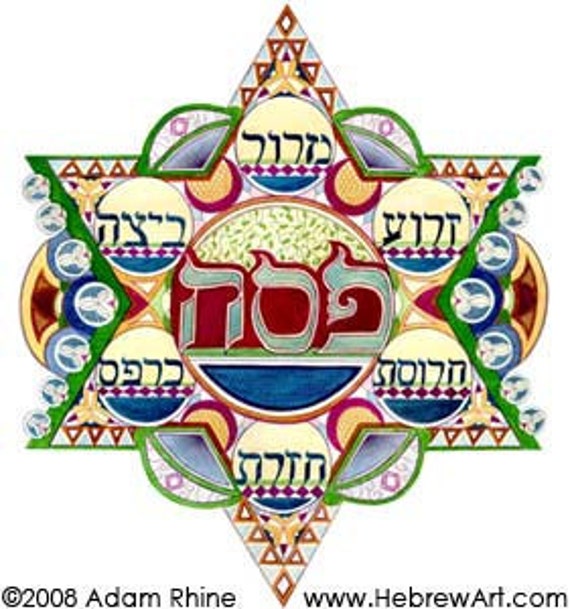
My family insists that we read the Haggadah, the book which tells the Passover story and orchestrates the seder, mostly in English. But when we do a blessing in Hebrew, we are not to double read it, by translating it! We’re now using a lovely Haggadah we purchased while in Israel from its compiler and illustrator, Rabbi Matthew Berkowitz. Rabbi Matt insisted that there’s nothing wrong with a Haggadah which has a wine stain or two on it. It shows its use.
Seder Plate Earrings by Linda B
Our main course for the Seder is either chicken or brisket. It’s always nice to have asparagus, as it is new in spring. My piece-de-resistance used to be a chocolate walnut torte (10 eggs), but it met with resistance with my family –no accounting for taste. So, now my favorite dessert is Blenheim apricots dipped in chocolate. Yum.
So that is how I prepare for and then do the Seder. On the seventh day of Passover, I attend synagogue and read the Shira haYom, the Song at the Sea of Reeds which reiterates how Pharoah’s army pursued the Israelites into the sea and was drowned.
Matzah Cover by Gail
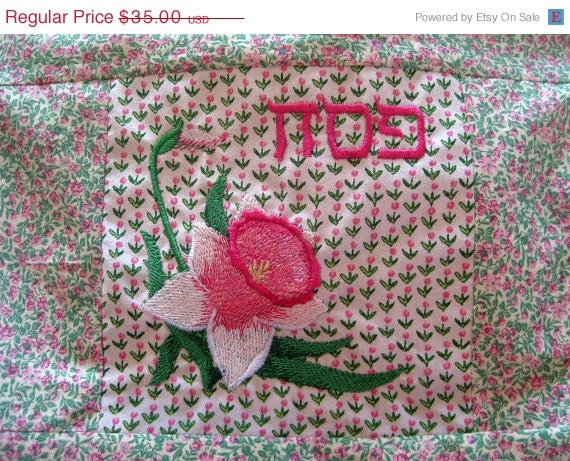
After Passover, again I look to my son or husband to help switch things to their regular position.
Wishing you all a Happy Passover and “Next Year in Jerusalem.”


2 comments:
Gail, can relate to the Passover preparation, it takes a long time. I do the feather thing, only in memory of my dad (z'l).
Nice article, Gail! My least favorite part of Passover preparation was always kashering the house. I would clean for days and days, and it was still never done :-p The past three years, I've hired a house cleaner -- so what if they're not as perfect as I am? lol -- it's a lot less stress.
My husband is a compulsive organizer. He insists being the one to box the chametz to a separate room (like I can't put a package of rice in a box? Fine!) and then arranging the Passover food and dishes in the kitchen cabinets. I'm pretty sure the utensils etc. are in precisely the same place every year.
Maybe once every 5 years, we remember to do the feather.
Post a Comment